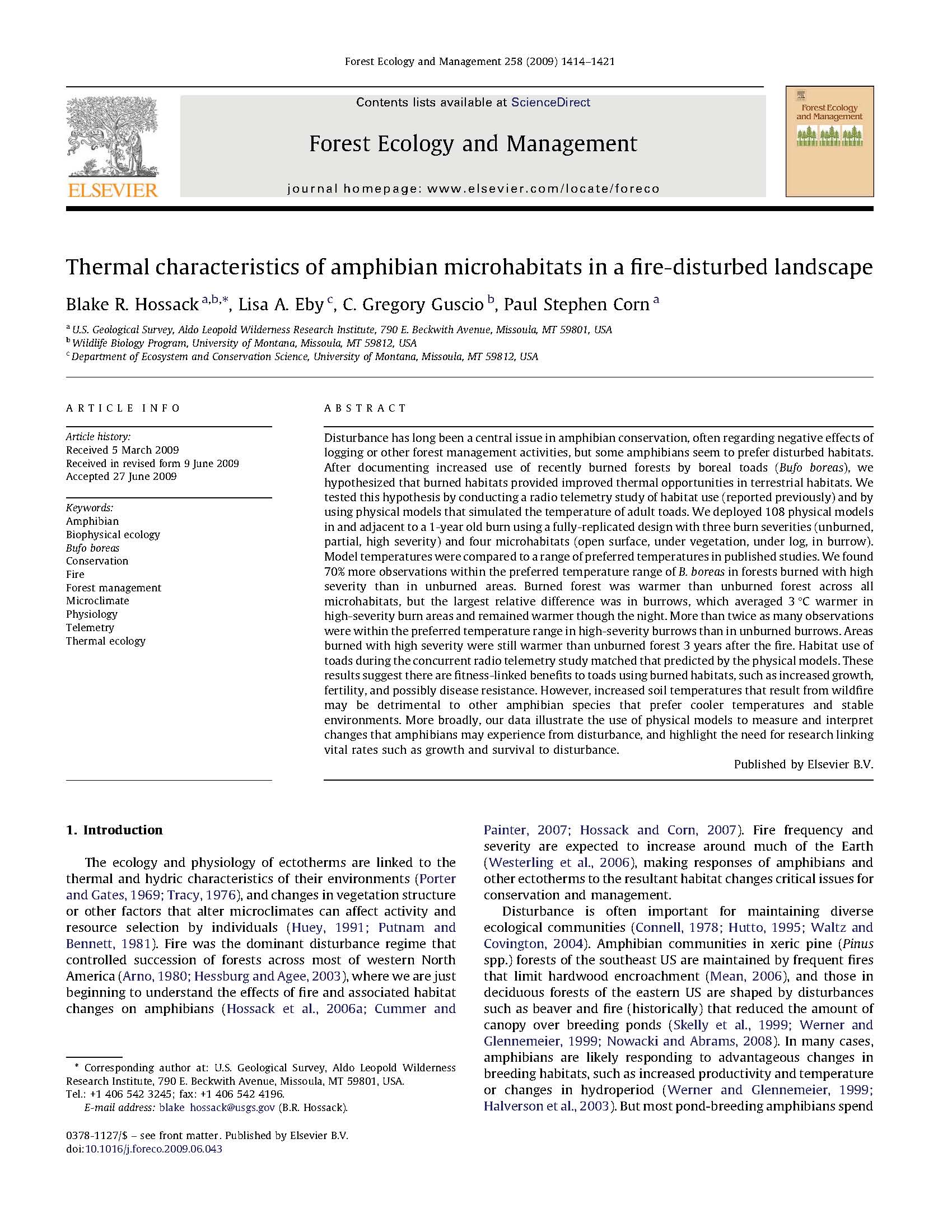Thermal characteristics of amphibian microhabitats in a fire-disturbed landscape
Abstract/Summary
Disturbance has long been a central issue in amphibian conservation, often regarding negative effects of logging or other forest management activities, but some amphibians seem to prefer disturbed habitats. After documenting increased use of recently burned forests by boreal toads (Bufo boreas), we hypothesized that burned habitats provided improved thermal opportunities in terrestrial habitats. We tested this hypothesis by conducting a radio telemetry study of habitat use (reported previously) and by using physical models that simulated the temperature of adult toads. We deployed 108 physical models in and adjacent to a 1-year old burn using a fully-replicated design with three burn severities (unburned, partial, high severity) and four microhabitats (open surface, under vegetation, under log, in burrow). Model temperatures were compared to a range of preferred temperatures in published studies. We found 70% more observations within the preferred temperature range of B. boreas in forests burned with high severity than in unburned areas. Burned forest was warmer than unburned forest across all microhabitats, but the largest relative difference was in burrows, which averaged 3 8C warmer in high-severity burn areas and remained warmer though the night. More than twice as many observations were within the preferred temperature range in high-severity burrows than in unburned burrows. Areas burned with high severity were still warmer than unburned forest 3 years after the fire. Habitat use of toads during the concurrent radio telemetry studymatched that predicted by the physical models. These results suggest there are fitness-linked benefits to toads using burned habitats, such as increased growth, fertility, and possibly disease resistance. However, increased soil temperatures that result from wildfire may be detrimental to other amphibian species that prefer cooler temperatures and stable environments. More broadly, our data illustrate the use of physical models to measure and interpret changes that amphibians may experience from disturbance, and highlight the need for research linking vital rates such as growth and survival to disturbance.
Publication details
| Published Date: | 2009 |
| Outlet/Publisher: | Forest Ecology and Management 258: 1414–1421 |
| Media Format: |
ARMI Organizational Units:
Rocky Mountains, Northern - BiologyTopics:
DroughtFire
Management
Monitoring and Population Ecology
Species and their Ecology
Stressors
Place Names:
MontanaKeywords:
amphibiansARMI
behavior
climate
ecology
fire
habitat
physiology
stressors

